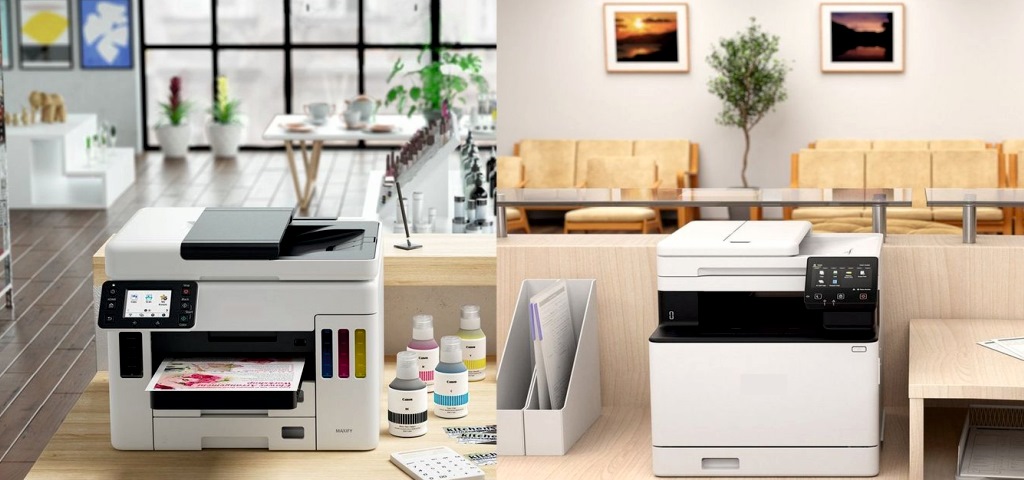In today’s fast-paced work environment, efficiency is key. Wireless printing is one technological advancement that can significantly improve the workflow of any office. Gone are the days of tangled cords and limited placement options for printers. By adopting wireless printing, businesses can enjoy a range of benefits that make office tasks more seamless and productive. Here’s a closer look at why wireless printing is a smart choice for your office.
1. Increased Flexibility and Mobility
One of the primary advantages of wireless printing is the flexibility it provides. With traditional wired printers, employees are often restricted to a designated location for printing, limiting their movement within the office. Wireless printers allow users to print from any device—whether it’s a laptop, tablet, or smartphone—from anywhere within the network’s range. This flexibility is especially useful in larger office environments or for teams that frequently move between meeting rooms and workstations.
2. Simplified Setup and Fewer Cables
A significant drawback of wired printers is the need for multiple cables and connections, which can lead to cluttered workspaces. Wireless printers eliminate the need for cables, creating a cleaner, more organized office environment. The setup process is also much simpler, as there’s no need to connect each computer physically to the printer. Once connected to the network, the wireless printer can serve multiple devices at once, making it easier to integrate into your existing office setup.
3. Cost Savings
While the initial cost of wireless printers might be slightly higher than wired models, the long-term savings make up for it. Wireless printers reduce the need for expensive wiring and maintenance associated with cable setups. Additionally, by enabling multiple devices to connect to a single printer, businesses can cut down on the number of printers needed, saving money on equipment and energy consumption.
4. Enhanced Collaboration and Productivity
Wireless printing enhances collaboration by allowing team members to print from their personal devices, whether they’re in the office or working remotely. Many modern wireless printers offer cloud-based printing, so employees can send documents to the printer from anywhere with an internet connection. This feature is especially beneficial for businesses with remote teams or employees who travel frequently. The ability to print on the go boosts productivity by minimizing delays and enabling more efficient workflows.
5. Compatibility with Multiple Devices
In a modern office, it’s common for employees to use a variety of devices, from desktops and laptops to smartphones and tablets. Wireless printers are designed to be compatible with a wide range of devices and operating systems, making it easier for everyone in the office to print without needing special software or hardware. This universal compatibility streamlines the printing process and ensures that everyone, regardless of their device, can connect and print easily.
6. Environmentally Friendly
Wireless printing can also have environmental benefits. By allowing employees to print only what they need, when they need it, wireless printers can help reduce paper waste. Additionally, the ability to share a single printer across multiple devices means fewer machines in the office, leading to reduced energy consumption and a smaller environmental footprint.
Conclusion
Wireless printing is more than just a convenience—it’s a game changer for office productivity, flexibility, and cost-efficiency. By simplifying the setup process, enabling printing from multiple devices, and supporting mobile and remote work, wireless printers can transform how your office operates. For businesses looking to streamline operations and embrace modern solutions, investing in wireless printing is a step in the right direction.
1. How does wireless printing work?
1. How does wireless printing work?
Wireless printing allows you to connect your printer to a Wi-Fi network, enabling any device on the same network (like laptops, smartphones, or tablets) to send print jobs wirelessly. You simply connect your devices to the network, select the wireless printer, and print without needing a physical cable connection.
2. What devices are compatible with wireless printers?
Most modern wireless printers are compatible with a wide range of devices, including desktops, laptops, tablets, and smartphones. As long as the device can connect to the same network as the printer, you can print directly from it. Many printers also support AirPrint (for iOS) or Google Cloud Print for easier mobile printing.
3. Is wireless printing secure?
Yes, wireless printers can be secure when properly set up. Many printers offer encryption and security features like password-protected access. Make sure your office Wi-Fi is protected with strong passwords, and regularly update your printer’s firmware to guard against potential vulnerabilities.
4. Do I need special software for wireless printing?
Most wireless printers come with drivers or software that can be easily installed on your devices. Some operating systems may have built-in printer drivers, making it even simpler to connect. Many printers also support mobile printing apps, so you can print directly from your smartphone or tablet without additional software

